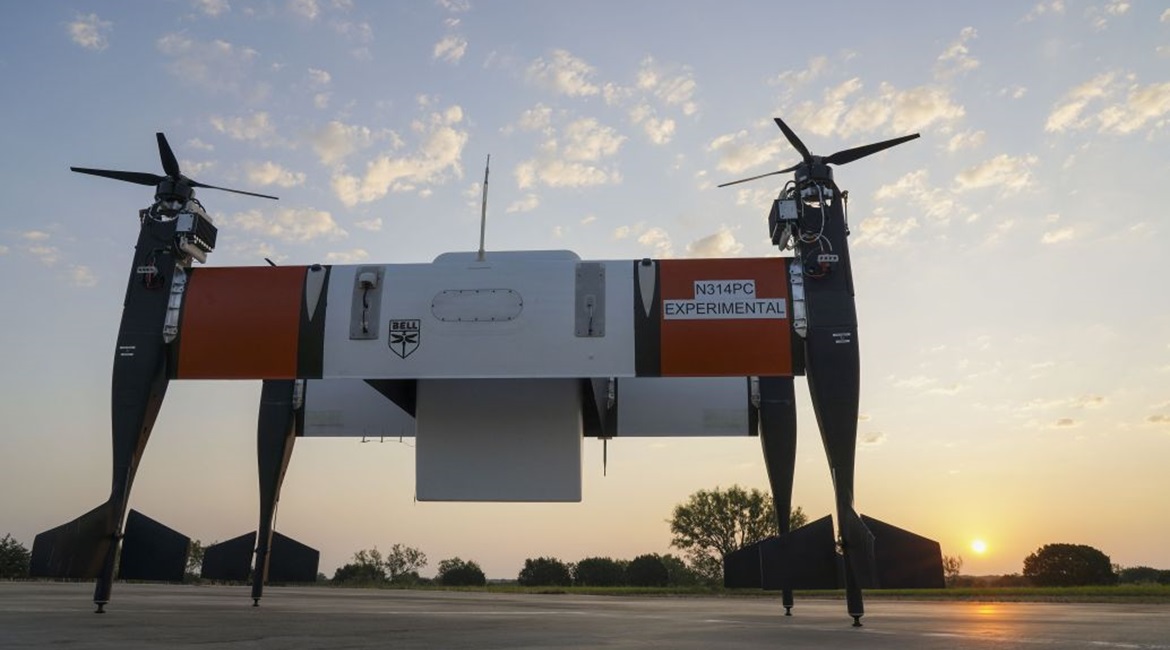
Bell on 16 October performed the first flight of its Autonomous Pod Transport (APT) 70 unmanned aerial vehicle (UAV) with a payload.
The aircraft flew with a 27.2 kg payload, company spokesperson Felicia Votta said on 20 November. The APT 70 flew vertically, transitioned to aircraft flight where it achieved speeds of over 61 knots, flew waypoints, then returned to hover and land at its destination.

Bell flew its Autonomous Pod Transport (APT) 70 UAV with a payload for the first time on 16 October. (Bell)
Bell said in an 18 November statement that it has planned an APT 70 test flight with a 31.8 kg payload, the aircraft’s maximum capacity. Votta said the APT 70 is powered by four electric motors that can vector their thrust.
The demonstration was in response to the PMA-263 Tactical Resupply Unmanned Aircraft Services (TRUAS) Challenge, a US Naval Air Systems Command (NAVAIR) prize challenge to provide an autonomous aerial delivery capability for the US Marine Corps (USMC) for field user evaluation.
PMA-263’s small Unmanned Logistics Support-Air (ULS-A) effort seeks prototypes that can transport at least 27.2 kg of cargo in various configurations commonly found in company, platoon, or squad resupply operations. These include a 19 litre water can, ammunition can or case, or a meal-ready-to-eat (MRE) case.
NAVAIR wants the aircraft to fly a 10 km radius and return unburdened to the launch site via automated launch, waypoint navigation, and automated landing. The prize challenge will consist of two phases.
The first phase will be a formal invitation to participate in the fly-off competition planned for January 2020 in Yuma, Arizona, based on applications received. The second phase will be actual participation in the fly-off, demonstrating the vendor’s prototype capabilities and ability to meet requirements.
Looking to read the full article?
Gain unlimited access to Janes news and more...




